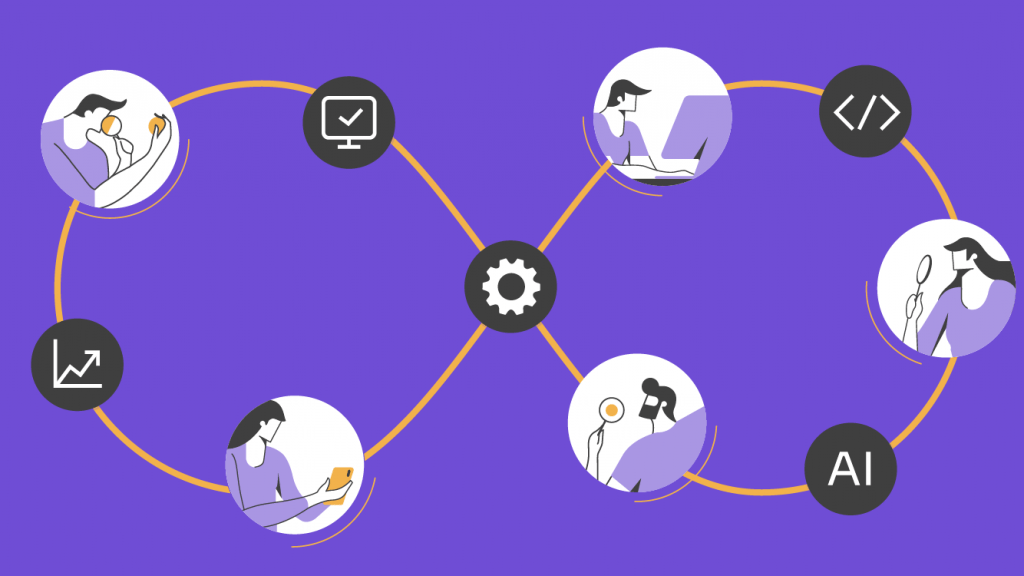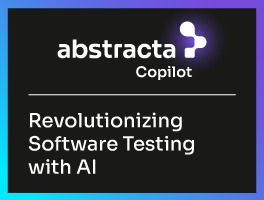11 Key Insights for Enterprise Software
Uncover 11 insights on functional and non-functional requirements in enterprise software, focusing on risks, AI, performance, compliance, and scalability for leaders.


Most software projects don’t fail because of bad code or lack of funding. Many fail because leadership underestimates the difference between a system that works and a system that works under pressure.
Functional requirements will tell you if your product can process a payment. But it’s the non-functional requirements that decide whether your platform can handle peak loads—like Black Friday traffic—without crashing, leaking data, or destroying customer trust.
If you’re leading an enterprise with thousands of users, compliance obligations, and sensitive data at stake, ignoring this distinction is a huge leadership risk
This guide challenges leaders to treat requirements as strategic levers of risk, growth, and reputation. Those who master them avoid costly outages and turn requirements into a competitive advantage at enterprise scale.
Book a strategy session with our team and see how we turn requirements into enterprise-grade outcomes
11 Key Functional and Non-Functional Requirements for Enterprise Software
Before We Begin: Why This List Matters
In enterprise software, failure rarely comes from a lack of ideas. It comes from requirements that were never clear, never tested, or never scaled. This list goes beyond definitions: it shows how functional and non-functional requirements shape growth, compliance, and resilience at scale. Each point connects the abstract with the concrete—what leaders must know to avoid the next costly failure.
1. Functional Requirements: Define Core System Behavior
Functional requirements describe the actions a system must execute. They answer: “What must the system do to fulfill business goals?”
- Leadership Angle: Without them, projects drift into endless revisions and scope creep.
- Enterprise Example: A banking platform calculating interest across multiple account types and generating regulatory reports.
- Breakthrough Edge: Today, AI agents can validate these requirements against real user stories—detecting contradictions before they derail delivery.
- Best Practice: Capture them precisely in the Software Requirements Specification (SRS) to enable alignment across teams.
2. Non-Functional Requirements: Set Quality at Scale
Non-functional requirements (NFRs) describe how the system performs under pressure—its reliability, scalability, and resilience.
- Why Leaders Should Care: NFRs determine adoption, compliance, and user trust.
- Enterprise Example: Supporting 50,000 concurrent logins during peak hours while maintaining sub-2-second response times.
- Risk: Ignoring them results in outages, frustrated users, and reputational damage.
- Breakthrough Edge: AI-driven monitoring agents can continuously stress-test NFRs, flagging risks long before incidents occur.
3. Why Both Drive Project Success
Functional requirements get the system working. Non-functional requirements maintain their reliability under scale, stress, and scrutiny.
- Stat Insight: PMI reports that unclear requirements can drive up to 47% of project failures.
- Leadership Takeaway: Defining both early is the foundation of transformation.
- Breakthrough Edge: The paradox—teams obsess over new features (functional) but users abandon platforms for performance failures (non-functional).
4. Functional Requirements Examples
Enterprise-ready functional requirements examples include:
- Payroll systems applying cross-border tax compliance
- ERP systems generating consolidated reports
- E-commerce platforms enabling shipment tracking
- Healthcare portals scheduling patient visits
Lesson for Leaders: Each is not just a feature but an encoded business rule. Without precision, compliance and ROI may collapse.
5. Non-Functional Requirements Examples
Strategic non-functional requirements examples at enterprise scale include:
- Availability: 99.99% uptime SLAs
- Security: End-to-end encryption for sensitive data
- Performance: Processing 1M daily transactions without degradation
- Recovery: Disaster recovery point objective < 15 minutes
- Compliance: GDPR, HIPAA, SOC 2 adherence
These go beyond ‘nice to have’ in software engineering—they are quality attributes that strongly influence survival in regulated industries.
6. User Stories and Business Rules: Bridging Business and Tech
Clear requirements emerge when user stories connect with business rules, bridging strategy and execution.
- User stories: Capture the “voice of the user” (e.g., “As a customer, I want to download past invoices to manage expenses.”).
- Business rules: Frame constraints (e.g., discounts apply only above $500).
- Leadership Angle: Together, they align technology decisions with measurable outcomes.
- Breakthrough Edge: AI agents can scan thousands of user stories to detect overlaps, contradictions, or missing cases—an impossible task for humans at scale.
7. System Components and Functional Decomposition
Breaking systems into components and applying functional decomposition clarifies scope.
- Why Leaders Care: Creates transparency into dependencies and risks.
- Enterprise Example: Splitting a supply chain system into order management, logistics tracking, and vendor payments.
- Breakthrough Edge: Combining decomposition with AI-driven work breakdown structures (WBS) gives leaders predictive visibility into bottlenecks before they surface.
8. Testing: Functional vs Non-Functional Requirements
Testing bridges requirements and reality, confirming both what the system does and how it performs under pressure. Early-stage testing also exposes risks from poorly defined requirements, helping teams correct gaps before they cascade into costly rework or failures at scale.
- Functional testing: Validates that features behave as intended.
- Non-functional testing: Proves resilience under stress, load, and attack.
- Leadership Lesson: Skewing one way creates blind spots.
- Breakthrough Edge: AI-powered testing uses autonomous agents to simulate real-world traffic spikes or penetration attacks 24/7, surfacing risks before production
9. Security, Compliance, and Sensitive Data Management
For enterprises, handling sensitive data is central to survival.
- Functional requirement: Users can set permissions for access control.
- Non-functional requirement: All data is encrypted in transit and at rest.
- Leadership Risk: Breaches cost not just fines, but market trust.
- Best Practice: Bake compliance into requirements, not into crisis response.
10. Usability, Performance, and System Recovery Processes
Non-functional requirements functional to enterprise adoption include:
- Usability: Interfaces for diverse roles with minimal training.
- Performance: Defined thresholds for response and throughput.
- Recovery: Requirements for system recovery processes and resilience benchmarks.
Leadership Angle: Clear metrics here determine adoption speed and resilience in moments of crisis.
11. Requirements Gathering and Team Alignment
Misaligned requirements cascade into project overruns.
- Best Practices:
- Use structured workshops with cross-functional teams
- Maintain both a functional requirements document and a requirements specification document
- Apply acceptance criteria checklists to align business and technical expectations
- Leadership Impact: Requirements are the contract between strategy and execution.
- Breakthrough Edge: AI agents now assist in requirements gathering—flagging ambiguities, surfacing hidden dependencies, and keeping teams aligned.
Strategic Comparison: Functional vs Non-Functional Requirements in Enterprises


| Aspect | Functional Requirements | Non-Functional Requirements |
|---|---|---|
| Definition | What the system does | How the system performs |
| Enterprise Example | Payroll calculation, report generation | 99.9% uptime, encrypted transactions |
| Impact on ROI | Direct: supports business rules and workflows | Indirect but critical: protects adoption, retention, and trust |
| Risk if Ignored | Features missing or misaligned with business goals | System crashes, compliance failures, reputational damage |
| Primary Owner | Product Owners, Business Analysts | CTOs, Architects, Compliance Officers |
| Cost of Neglect | Rework, scope creep, delayed launches | Outages, fines, customer loss, brand erosion |
| AI Agent Opportunity | Validate user stories and detect requirement gaps | Continuous monitoring, predictive performance testing |
Turning Requirements Into Enterprise Advantage
Functional and non-functional requirements are not technical checkboxes but executive levers for resilience, compliance, ROI, and long-term trust. Enterprises that elevate them to board-level priorities reduce risks, accelerate adoption, and maximize returns on multimillion-dollar technology investments.
AI agents now reshape this landscape by validating user stories, stress-testing non-functional requirements, and predicting risks before they surface. By aligning functional precision with non-functional rigor, and augmenting both with AI-driven insights, organizations transform software from a fragile cost center into a foundation for enterprise growth, trust, and sustained ROI.
FAQs on Functional and Non-Functional Requirements


What Are Functional and Non-Functional Requirements?
Functional and non-functional requirements are categories of software requirements that describe what a system must do and how it should perform tasks. They guide system design, align project scope, and support project managers in communicating clearly defined requirements to the development team.
What Is an Example of a Functional Requirement?
An example of a functional requirement is that external users must be able to delete customer records within the software system. A user story describes this expected behavior, and examples functional requirements provide concrete references that connect system functions, various user interactions, and system behavior needed for project success.
Which Is an Example of a Non-Functional Requirement?
An example of a non-functional requirement is system availability, describing how the system performs under defined conditions. These quality attributes guide non-functional testing, system safety, and the system’s responsiveness to improve the system’s quality attributes.
How Should Leaders Oversee Requirements Gathering?
Leaders oversee requirements gathering by documenting business requirements, system overview, and overall description into a requirements specification document. This process aligns business rules with user expectations, acceptance criteria, and document requirements to keep the development team on the same page.
How Do Functional Requirements Influence System Design Decisions?
Functional requirements influence system design decisions by defining system functions, system architecture, and other system components. They support functional decomposition, system boundaries, and functional requirements document preparation to function properly within complex processes.
What Are Common Challenges in Defining Non-Functional Requirements?
Common challenges in defining non-functional requirements include addressing system’s usability, sensitive data protection, and defining error messages. These challenges impact system performance, data integrity, and the system’s functionality, requiring a precise acceptance criteria checklist and system attributes to align with user feedback.
How Can Requirements Be Prioritized During Analysis?
Requirements can be prioritized during analysis using a work breakdown structure, system requirements, and project scope. Prioritization balances clearly defined requirements, acceptance criteria, and project managers’ inputs to support project success and align with user requirements.
What Tools Assist in Gathering Functional and Non-Functional Requirements?
Tools assist in gathering functional and non-functional requirements by supporting requirements specification document creation and the development process documentation. They help define system overview, software requirements specification, and data processing while capturing user story descriptions, various interaction scenarios, data entry, and external interfaces.
How Do Functional Requirements Differ Across Agile and Waterfall Methodologies?
Functional requirements differ across agile and waterfall methodologies in how document requirements and system components evolve during software development. Agile uses user stories, user interactions, AI agents, and a user interface to enable users, while waterfall emphasizes functional requirements and examples in a functional requirements document.
How Do AI Agents Support Requirements in Enterprise Systems?
AI agents support requirements in enterprise systems by analyzing user story descriptions, business rules, and development process documentation. They improve requirements gathering, report generation, system overview, and software development, helping project managers define particular solution boundaries and document requirements with technical knowledge for various interaction scenarios.
How We Can Help You


With nearly 2 decades of experience and a global presence, Abstracta is a leading technology solutions company with offices in the United States, Chile, Colombia, and Uruguay. We specialize in software development, AI-driven innovations & copilots, and end-to-end software testing services.
We believe that actively bonding ties propels us further. That’s why we’ve forged robust partnerships with industry leaders like Microsoft, Datadog, Tricentis, Perforce, Saucelabs, and PractiTest, empowering us to incorporate cutting-edge technologies.
By helping organizations like BBVA, Santander, Bantotal, Shutterfly, EsSalud, Heartflow, GeneXus, CA Technologies, and Singularity University we have created an agile partnership model for seamlessly insourcing, outsourcing, or augmenting pre-existing teams.
Visit our Performance Testing Services page!
Contact us to improve your system’s performance.


Follow us on Linkedin & X to be part of our community!
Recommended for You
What is Functional Testing? Types, Strategies, and Automation


Sofía Palamarchuk, Co-CEO at Abstracta
Related Posts
How to Choose a QA Testing Services Provider?
Stellar software hinges on rigorous QA testing. In this article, we navigate the realm of QA testing services and we guide you on how to choose a good QA services company. The relevance of raising the level and getting started with a software testing services…
Abstracta to Attend the RSA Conference 2015 in San Francisco
We will be attending the RSA Conference 2015 next week! The RSA Conference is the industry’s largest global information security event. This year, they are offering 23 tracks and over 500 speakers from across the industry. There will be over 300 sessions led by some…
Search
Contents
Categories
- Acceptance testing
- Accessibility Testing
- AI
- API Testing
- Development
- DevOps
- Fintech
- Functional Software Testing
- Healthtech
- Mobile Testing
- Observability Testing
- Partners
- Performance Testing
- Press
- Quallity Engineering
- Security Testing
- Software Quality
- Software Testing
- Test Automation
- Testing Strategy
- Testing Tools
- Work Culture





